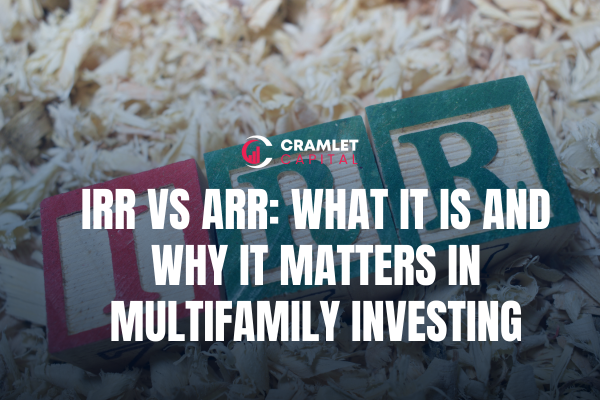
“Do not save what is left after spending, but spend what is left after saving.” — Warren Buffett
Why These Metrics Matter
When evaluating real estate syndication opportunities, you’ll often see sponsors highlight two return metrics: IRR (Internal Rate of Return) and ARR (Average Annual Return).
At first glance, they may look similar. Both are percentages that show how much your money grows. But they measure growth differently — and that difference can dramatically change how you interpret a deal.
What is AAR ?
Average Annual Return (ARR) is the simple average of returns over the life of the investment. Example: If you earn 10%, 12%, and 14% over three years, the ARR is 12%.
- Easy to calculate
- Doesn’t factor timing of cash flows — whether you get money early or late, ARR treats it the same.
What is IRR ?
Internal Rate of Return (IRR) is the “gold standard” in real estate investing. It measures your annualized return while factoring in when you receive distributions.
- Accounts for timing of cash flows
- Shows the true speed of your money’s growth.
A Scenario in Numbers
Let’s compare two investments, both with the same total return but very different timing:
You invest $100,000.
- Scenario A: You receive steady cash flow each year.
- Scenario B: You wait until the end and get a lump sum back.
| Scenario | Cash Flow Timing | Total Return | ARR | IRR |
|---|---|---|---|---|
| A: Steady Cash Flow | $10k per year for 5 years + $50k at sale | $100k (2x equity multiple) | 20% | ~18% |
| B: Back-Loaded | $0 for 4 years + $150k at sale in year 5 | $100k (2x equity multiple) | 20% | ~15% |
Takeaway: Both show a 20% ARR, but the IRR tells you that Scenario A grows your money faster and gets cash back in your pocket sooner.
Conclusion: Which Should Passive Investors Trust?
As a passive investor, both metrics are useful — but they serve different purposes.- ARR is a quick snapshot, useful for comparing deals at a glance.
- IRR gives you the true picture, showing how quickly your money is returned and how hard it’s working over time.
Next Step?
If you’re ready to explore passive real estate investing with a team that prioritizes disciplined underwriting and investor alignment, we invite you to take the next step.
We’ll walk you through current opportunities, explain how we apply these metrics in our evaluation process, and answer any questions about how real estate syndication can fit into your portfolio.
